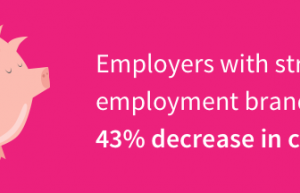Are you a good storyteller? If not, it could be holding you back at work. Anyone with aspirations of being a great leader, someone who inspires others to work together and give their all to a joint mission, needs to be able to tell a good story. It’s one of the most proven and effective ways to explain something complex (and today’s business world is certainly that). Just consider the Epic of Gilgamesh (the oldest story ever written), the Bible, the Egyptian Book of the Dead, the Iliad … these are powerful stories dating back to the earliest days of humanity. Stories teach new ideas, entertain, challenge our thinking, and paint pictures in our minds. Movies, books, music, news, religion, art – you name it, the influences of storytelling can be seen across all aspects of life. A great story can bring you to tears. It can be passed down through generations or today, go viral in a matter of minutes.
Yet, despite the well-documented power of storytelling, far too many leaders and organizations are nothing short of awful at telling stories that make authentic connections to what people care about the most. Leaders commonly prep for change by creating catchy tag lines, slogans and rallying cries to communicate their ideas. These sound bites might be rich with data, numbers, statistics, and analytic driven acronyms, but they’re devoid of authentic meaning. The end result? Seventy percent of the workforce is left phoning it in because their leaders haven’t told a compelling story that makes them feel connected to their jobs or the company as a whole. Consider this: if engagement scores haven’t changed in 30 years and we still have the vast majority of people sleep-walking through their work-a-day-life, something is not working.
It’s time to change things up …
Great stories in today’s digital world spread like wildfire, quickly inspiring people to take action. Take the August 2014 ALS Ice Bucket Challenge for example. Everyone from Bill Gates to Ethel Kennedy to former President George Bush poured a bucket of ice water on his or her head, challenged others to do the same in 24 hours and made a donation to fight ALS.
The impact was huge. ALS raised $ 94.1 million from over 2.1 million new donors in just the first four weeks – compared with only $ 2.5 million for the same period in the previous year.
Why did we care so much about the Challenge? In a very compelling way – no flashy taglines required – it told us the story of ALS. It explained how there is currently only one drug approved by the U.S. Food and Drug Administration (FDA) to treat ALS, which only modestly extends survival by two to three months, and how the disease is 100 percent fatal.
Another obvious example of captivating storytelling is the movies. How often have you watched your favorite movie without tiring of it? How well do you remember the plot details? How quickly could you recite the exact words that best captured the spirit of the story?
The academic world supports the power of storytelling as well. Jennifer Aaker, a professor of Marketing at Stanford’s Graduate School of Business, notes that stories are 22 times more memorable than facts alone. Twenty-two more times! So leaders, listen up. When preparing to speak to your people, you must remember that stories are what make the difference, not facts, figures, lists or acronyms.

If storytelling is so unique to human history, and important to the way we live our lives, then why is it so poorly done in business?
Based upon personal experience (and the annual reports of pretty much every Fortune 2000 company out there), I’ve found that the following initiatives have been almost universally and unequivocally on repeat for decades:
- Cut costs
- Penetrate growth markets
- Expand organic growth where innovation will be the differentiator
- And the new favorite: create exceptional customer experiences
It’s not that these initiatives are wrong, as they are often the basics of good business, but they do not tell a compelling story that inspires people, causes them to think, or excites them to change the world.
While a business can’t be successful without sustainable, profitable growth that attracts investors – it is not the reason people make sacrifices to create and build something of value. To tell a powerful story, you must first ask yourself: What is it that we want to create, that does not exist, for which we would be willing to endure personal sacrifice to bring it to life?
After witnessing leaders and their storytelling tactics (the good and the bad) throughout my professional lifetime, I know effective storytelling at work isn’t about informing people about the bottom line. It’s about drawing them in through the possibility of being a part of something big. It’s inviting them to be on the team that is creating, building and going on an adventure. When you have this talent, you’re uniquely poised to be a powerful and engaging leader. If you’re lacking it, there’s no time like the present to work on perfecting this skill.
Business & Finance Articles on Business 2 Community(32)









